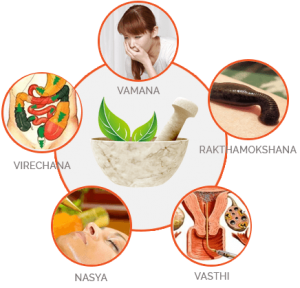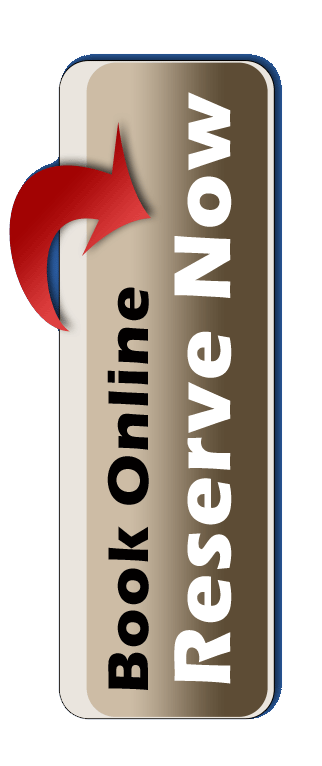What is Panchakarma Treatment?

Panchakarma Treatment is a set of five therapeutic treatments administered to the patient for the complete detoxification of the body. According to Ayurveda, the detoxification of the body is essential before undergoing any other major treatment. Even for healthy people, it is recommended to undergo this treatment once every five years to get rid the body of all the impurities and chemical toxins it accumulates over the years. In some cases, Panchakarma treatment alone can cure many chronic diseases that will not require any further treatments afterwards.
When you think about wellbeing, you can’t help but feel a sense of warmth and hope, right? Well, that’s where panchakarma treatment comes into play—a gentle embrace for the body and a fresh start for the mind. Now, if we rewind a little, we’ll find panchakarma’s roots leading back to ancient India; it draws from Ayurvedic traditions, which have been around for over 3,000 years. This holistic approach isn’t just about detoxifying the body; it’s a beautifully curated process aimed at rejuvenating your spirit by balancing those doshas, or energies, that govern our health. You see, with panchakarma, the idea is to cleanse and restore, wrapping you in a kind of care that feels as if it’s been designed just for you—something that many swear by for achieving not only physical but emotional harmony as well.
What are the benefits of Panchakarma treatment?
Panchakarma treatment removes toxins from the digestive system, bowels, lungs, blood vessels and nervous system. It strengthens the muscles and joints and helps in the hormone secretion of all glands. It improves the appetite, sleep quality, sexuality, concentration and memory. No wonder many people feel like they have a new body after Panchakarma treatment
Who should follow this Panchakarma treatment program?
Those whole live with constant stress and strain from their work and daily lifestyle, addicts of tobacco, alcohol and drugs, those who have been taking prescription herbals over a long period of time, those who suffer from ailments such as arthritis, rheumatism, chronic digestive problems, constipation, migraines, obesity, insomnia, or just about anybody who feels the need to purify their body.
How many Days should you stay for Panchakarma treatment?
Minimum 21 to 28 days for a normal, healthy person. The first day will be dedicated to consultations with the “Vaidya” (ayurvedic physician) and rest. The treatment begins on the second day and there will be one or two rest days between phases of the panchakarma treatment, depending on how well your body is responding.
What is the daily program for Panchakarma treatment?
- Daily consultation with our Ayurvedic Vaidya to monitor your health and progress
- Therapy sessions
- Oral Herbal medication
- Ayurvedic diet (which will be decided by the Vaidya after consultation)
- Yoga and breathing sessions (1 or 2 sessions per day – optional)
- Meditation (optional)
- Any other activity you choose that does not contradict with the treatment such as taking a brisk walk in the forest surrounding our campus or taking a swim in the river.
The 5 Phases of Panchakarma Treatment
1.Purvakarma-the pre-purification preparation
Before the actual detoxification begins in panchakarma treatment, there is a need to prepare the body in prescribed methods to encourage it to release toxins. Two procedures are used for this: Snehana and Swedana.
Snehana is a full-body massage with medicated herbal oils. The oil is massaged into the body in a particular manner in order to move the toxins towards the gastro-intestinal tract. The oil also penetrates the skin leaving the superficial and deep tissues soft and supple, thus helping to remove stress and nourish the nervous system. Snehana is given for 3 to 7 days as indicated.
Swedana is sudation or sweating. It is given every day immediately following Snehana. An herbal concoction may be added to the steam to further loosen the toxins from the body. Swedana liquefies the toxins and facilitates their movement towards the gastro-intestinal tract.
Pradhanakarma-The main Purification process
- Vamana- Vomiting Therapy
When there is congestion in the lungs causing repeated bronchitis attacks, colds, cough or asthma, the Ayurvedic treatment is therapeutic vomiting. This therapy eliminates the Kapha causing the excess mucus.
- Virechana -Purgation Therapy
When excess bile (Pitta) is secreted and accumulated in the gall bladder, liver and small intestine, it tends to result in rashes, skin inflammation, acne, chronic fever, vomiting, nausea and jaundice. Ayurveda suggests in these conditions, the administration of therapeutic purgation or a therapeutic laxative.
- Nasya- Nasal Administration
The nose is the doorway to the brain and also the entryway to one’s inner self. The nasal administration of medicated drops is recommended for an excess of bodily humors accumulated in the sinuses, throat, nose or head areas. They are eliminated through the nearest possible opening – the nose.
- Basti-Enema Therapy
The predominant location for Vata is the colon. Basti therapy involves the introduction of herbal decoctions and medicated oil preparations into the rectum. It relieves constipation, digestive problems, chronic fever, colds, sexual disorders, kidney stones, heart pains, backache, sciatica and various joint pains. Many other Vata disorders such as arthritis, rheumatism, gout, muscle spasms and headaches can also be treated with Basti.
The above-mentioned treatment plan is the general Panchakarma therapy for a normal healthy person. However, our vaidyas will check your past medical history and diagnose your present health condition before deciding on the correct treatment for your individual needs.
Panchakarma Art of Living
Imagine stepping into an ancient sanctuary where the air is thick with the aroma of herbal oils and the soft sound of flowing water invites you to relax—this isn’t just any spa experience; it’s the essence of panchakarma, an age-old Ayurvedic treatment that’s come to embody the art of living well. People often think of panchakarma treatment merely as a remedy, yet it’s so much more. This process, deeply rooted in India’s traditional medicine system, seeks to rejuvenate the body and mind through cleansing detoxification practices. With that intention, panchakarma treatment involves a series of therapeutic procedures, like oil massages and herbal steam baths, that not only promote relaxation but also nurture overall health.
Transitioning from the tranquillity to the inner workings, the magic lies in its tailored approach; it’s not one-size-fits-all. Each treatment is custom-fitted to the individual’s constitution or dosha, making it profoundly personal. As you engage with the different therapies, you’ll find that they not only detoxify but also invigorate your spirit, creating a harmonious balance conducive to holistic living. This ancient wisdom teaches that maintaining health isn’t just a physical endeavour but encompasses mental and emotional well-being as well; hence, the art of living is woven into every aspect of panchakarma treatment.
Curiosity about where this all began is natural, and it leads us to explore the foundational principles of what panchakarma treatment truly is and its historical origins, unearthing the wisdom that has been passed down through generations.
In today’s fast-paced world, we often overlook the importance of self-care, much like the ancient Greeks who extolled the virtues of bathing and balance. Panchakarma treatment serves as a gentle reminder that taking time for ourselves is essential for holistic wellness. As we embrace these rejuvenating practices, we might find ourselves resembling heroes from myth, reclaiming our health and vitality.
For Enquiry / Booking
Tariffs
Click here for our Tariff




 WhatsApp us
WhatsApp us